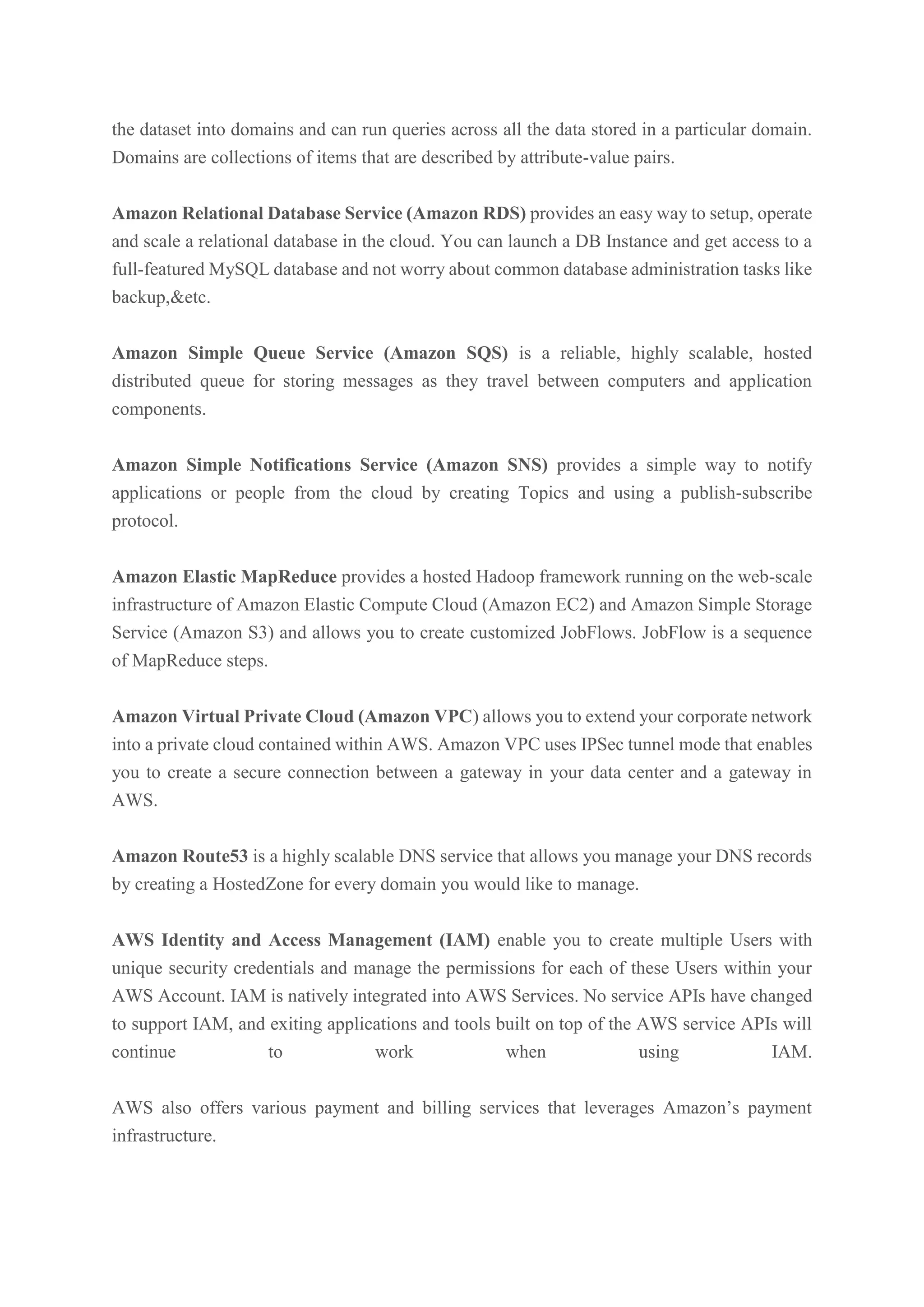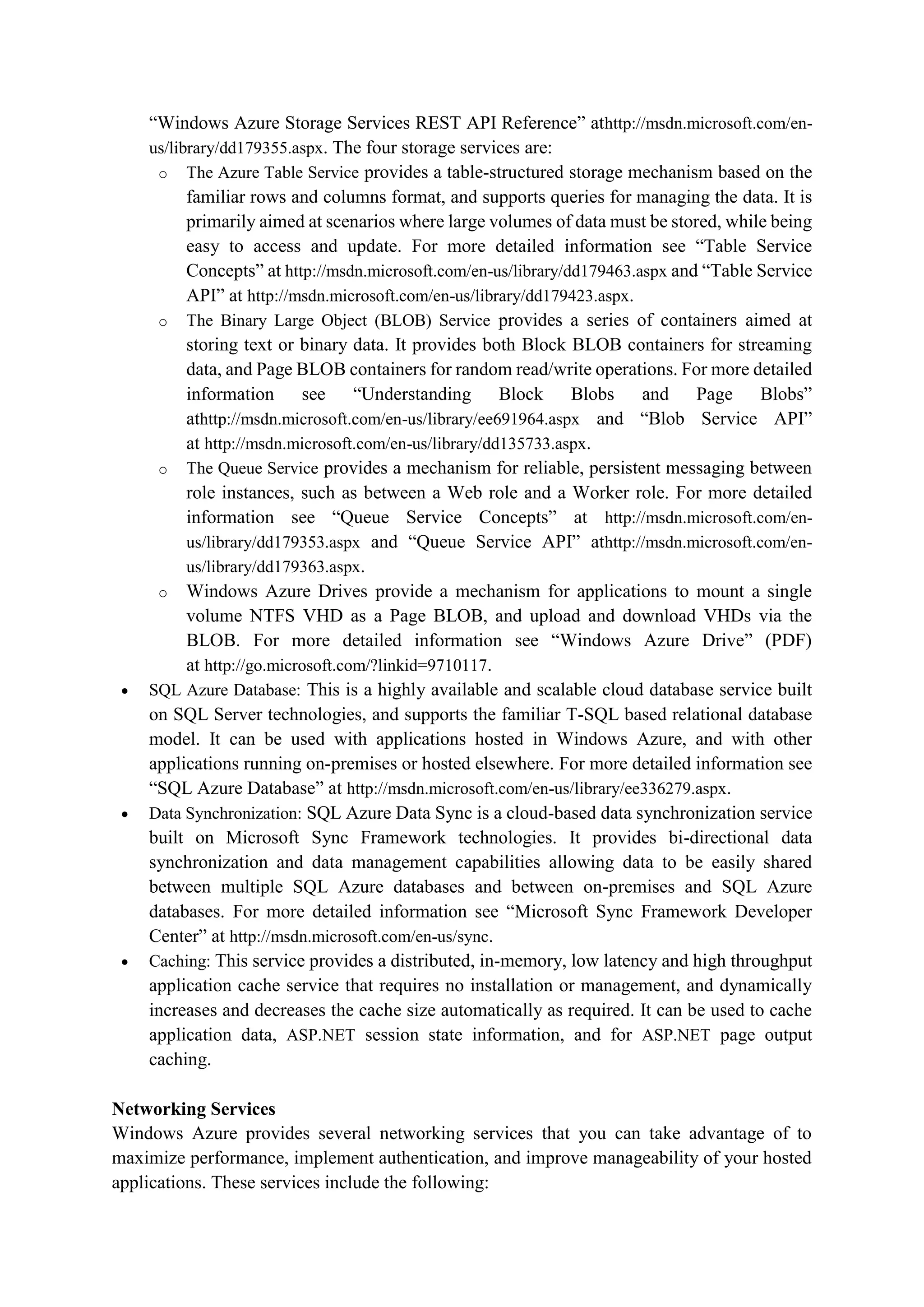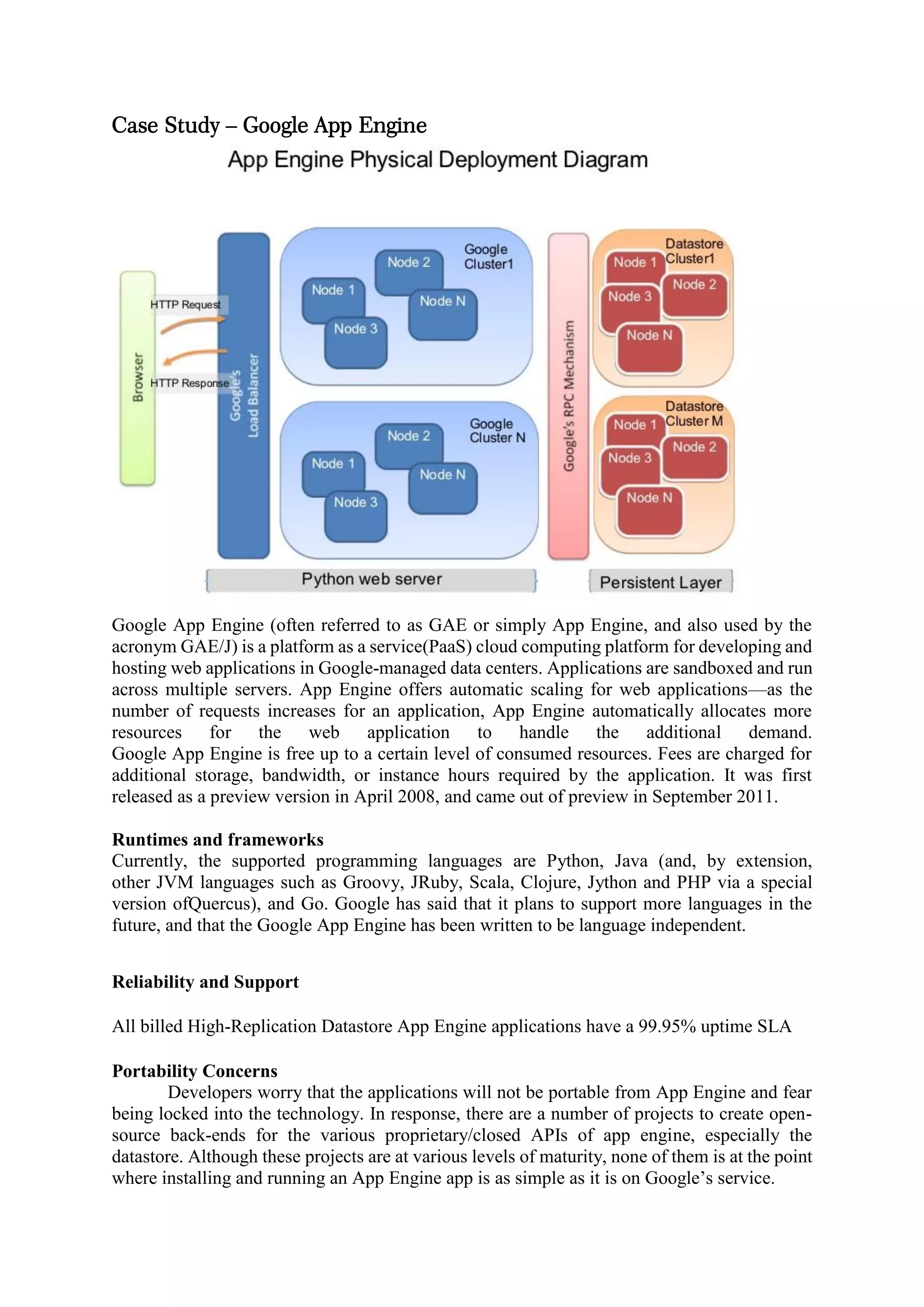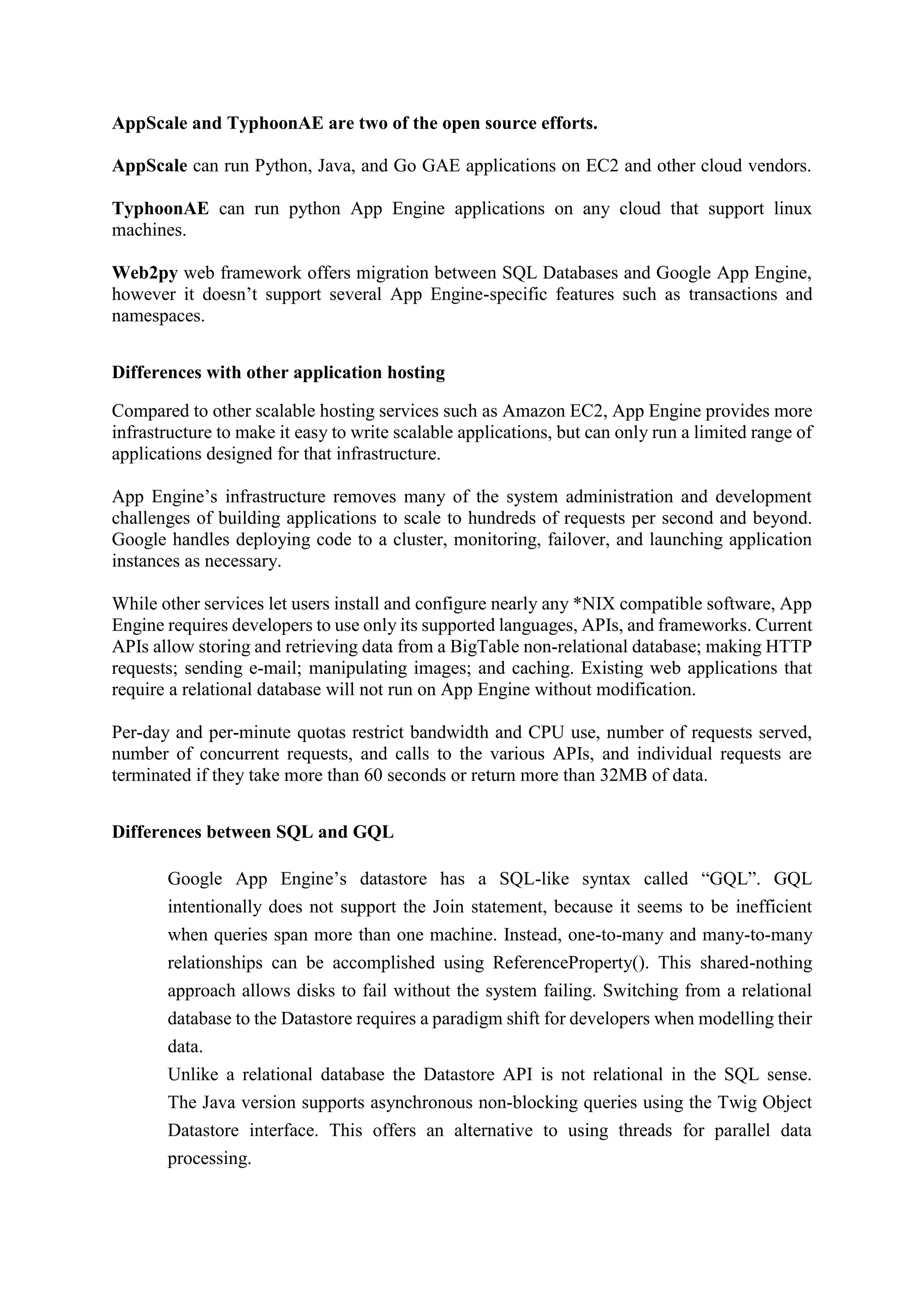The document provides an overview of key services and features available on the Google App Engine platform, including:
- Supported programming languages of Python, Java, and Go.
- Automatic scaling of web applications as traffic increases.
- High reliability with a 99.95% uptime SLA for applications.
- Portability concerns as applications may not be easily moved off the Google platform.
- Differences from other hosting services like AWS EC2, with Google providing more infrastructure support but also more limitations on what applications can run.






